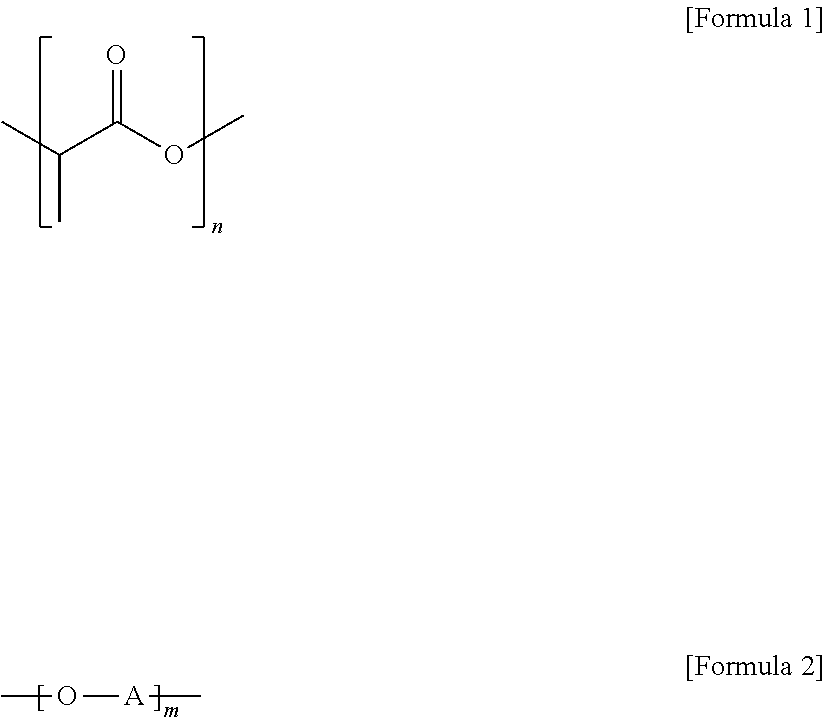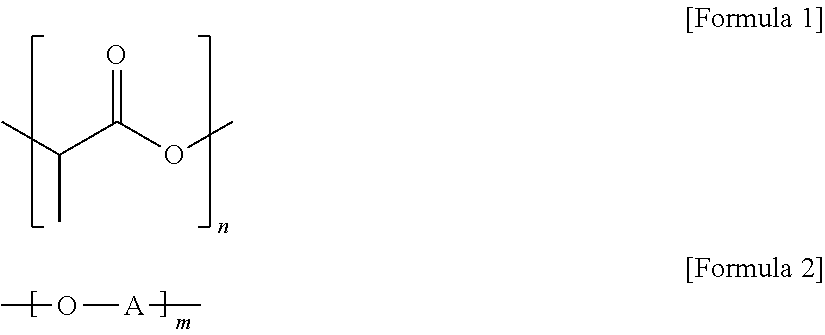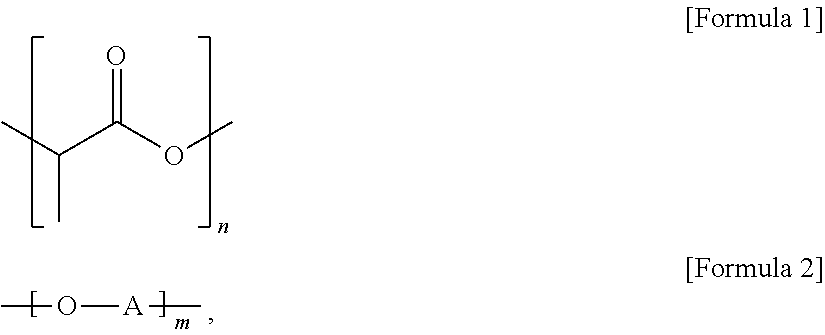Thermally adhesive flexible polylactic acid resin composition
a polylactic acid resin and flexible technology, applied in the direction of heat-activated film/foil adhesives, adhesives, etc., can solve the problems of large emission of greenhouse gases, poor extrudability, environmental pollution, etc., and achieve low glass transition temperature, low melting temperature, and low enthalpy of fusion
- Summary
- Abstract
- Description
- Claims
- Application Information
AI Technical Summary
Benefits of technology
Problems solved by technology
Method used
Image
Examples
experimental example
al Adhesive Film
[0113]At least one of the polylactic acid resins A to J was dried at 80° C. for 6 hours under a reduced pressure of 1 torr and then extruded in a 30 mm single screw extruder equipped with a T die into a sheet form under the temperature conditions shown in Table 2. The extruded sheet was electrostatically cast on a drum cooled to 5° C. to obtain an unoriented film.
[0114]The unoriented film thus obtained was stretched 3 times in the machine direction (MD) between heating roles under the drawing conditions shown in Table 2. The uni-axially oriented film was fixed with clips and then stretched 4 times in the transverse direction in a tenter frame. Subsequently, the film was fixed in the transverse direction and subjected to a heat treatment at 120° C. for 60 seconds to obtain a bi-axially oriented polylactic acid resin film. The evaluation results of the film are summarized in Tables 2 and 3.
[0115]
TABLE 1ResinResinResinResinResinResinResinResinResinResinABCDEFGHIJL-lacti...
PUM
| Property | Measurement | Unit |
|---|---|---|
| Tm | aaaaa | aaaaa |
| Tg | aaaaa | aaaaa |
| Tg | aaaaa | aaaaa |
Abstract
Description
Claims
Application Information
 Login to View More
Login to View More - R&D
- Intellectual Property
- Life Sciences
- Materials
- Tech Scout
- Unparalleled Data Quality
- Higher Quality Content
- 60% Fewer Hallucinations
Browse by: Latest US Patents, China's latest patents, Technical Efficacy Thesaurus, Application Domain, Technology Topic, Popular Technical Reports.
© 2025 PatSnap. All rights reserved.Legal|Privacy policy|Modern Slavery Act Transparency Statement|Sitemap|About US| Contact US: help@patsnap.com



